- Joined
- Apr 24, 2010
- Messages
- 12,923
- Reaction score
- 27,656
- Golden Thread
- 1
- Location
- Upper Canada 🇨🇦
- 🥇 Banner finds
- 1
- 🏆 Honorable Mentions:
- 3
- Detector(s) used
- XP Deus, Lesche Piranha 35 Shovel & 'Garrett Carrot'
- Primary Interest:
- Relic Hunting
This is a field I first detected while the c1840 house was still standing, but it was demolished last year to make way for residential development. I thought, lets give it one more shot before the bulldozers in the next field get over here. So yesterday, I spent 4hrs here digging any potentially sounding good signals and am I ever glad that I did! My first three finds were all early Canadian Halfpenny Tokens.

1820 Bust and Harp Halfpenny Token — Obverse - Laureate head depicts King George IV in cuirass (body armour) facing left. Reverse - A harp incorporating the body of a winged female facing left, 1820 date below. In 1825 a halfpenny token was struck in Great Britain on Canadian order even though the currency regulations enacted in 1825 forbade the further importation of private tokens into Canada. However, nothing in the currency regulations interfered with importing tokens dated before 1825. These tokens became popular with the Irish immigrants of Lower Canada and were soon widely imitated in brass and competed with legitimate colonial coinage for 20 years. There is great variation in workmanship and weight.
1833 Halfpenny Sloop ‘To Facilitate Trade’ Token — The Sloop Tokens appear after 1825, some being openly antedated to evade the law of 1825 against private tokens. The law was openly ignored in Upper Canada, who were secure in their relative isolation from the commercial and political centre of Lower Canada. At the time, the sloop was the chief means of transportation on the Great Lakes and far more reliable than any form of land transport. Rev. Henry Scadding said this sloop was a portrayal of the packet "Duke of Richmond", owned by a man named Oates.
1837 Lower Canada Halfpenny Token - During the 1830s and the Patriotes Rebellion in Canada there was a shortage of small change, which encouraged private companies to carry out several copper coins. The first token of Quebec was that of an ironmonger named John Shaw. This was a token strike on one side various tools sold in his business and the other his name and the place Upper Town Quebec. In 1838, he created pennies representing a character on the reverse wearing a sash. Even if it's the year 1837 on the token, it was really struck early in 1838 by several different banks, including Quebec Bank which produced 120,000 1/2 penny and 240,000 pennies.
My last coin find was a 1917 One Penny LC. I also found two flat buttons, a couple of early brass knobs and two aluminum tags with writing on them. The ‘tubular’ 2.5” long piece of brass is interesting. At first, I was thinking it was farm machinery related, but the inside isn’t threaded, so I have no idea what it might be.
Thanks very much for looking,
Dave
Amazon Forum Fav 👍
Attachments
-
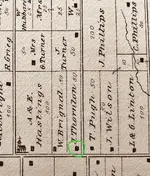 Z001.webp242.7 KB · Views: 99
Z001.webp242.7 KB · Views: 99 -
 Z002.webp146.9 KB · Views: 84
Z002.webp146.9 KB · Views: 84 -
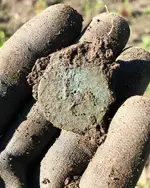 Z016.webp242.2 KB · Views: 87
Z016.webp242.2 KB · Views: 87 -
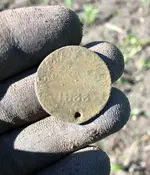 Z017.webp161.9 KB · Views: 80
Z017.webp161.9 KB · Views: 80 -
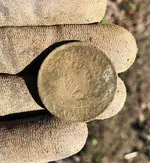 Z015.webp252.7 KB · Views: 83
Z015.webp252.7 KB · Views: 83 -
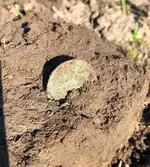 Z003.webp259.4 KB · Views: 80
Z003.webp259.4 KB · Views: 80 -
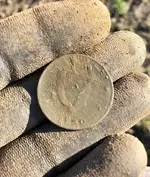 Z004.webp244.1 KB · Views: 80
Z004.webp244.1 KB · Views: 80 -
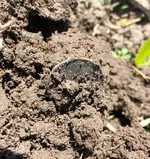 Z005.webp291.7 KB · Views: 77
Z005.webp291.7 KB · Views: 77 -
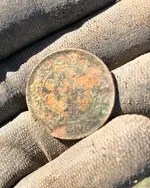 Z006.webp237.5 KB · Views: 81
Z006.webp237.5 KB · Views: 81 -
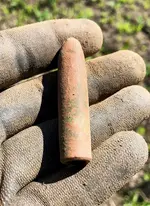 Z018.webp213.5 KB · Views: 76
Z018.webp213.5 KB · Views: 76 -
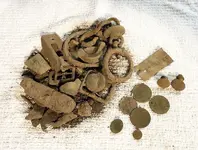 Z007.webp165.5 KB · Views: 81
Z007.webp165.5 KB · Views: 81 -
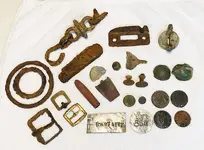 Z008.webp132.8 KB · Views: 86
Z008.webp132.8 KB · Views: 86 -
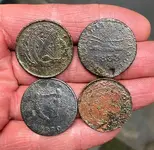 Z009.webp249.6 KB · Views: 85
Z009.webp249.6 KB · Views: 85 -
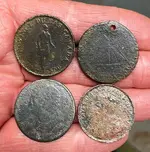 Z010.webp261.5 KB · Views: 111
Z010.webp261.5 KB · Views: 111 -
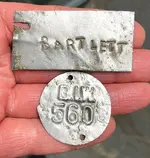 Z011.webp193.7 KB · Views: 74
Z011.webp193.7 KB · Views: 74 -
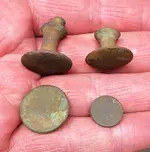 Z012.webp114 KB · Views: 73
Z012.webp114 KB · Views: 73 -
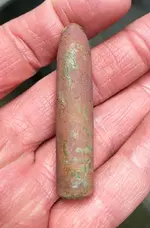 Z013.webp79.5 KB · Views: 72
Z013.webp79.5 KB · Views: 72 -
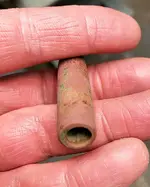 Z014.webp86.7 KB · Views: 72
Z014.webp86.7 KB · Views: 72
Last edited:
Upvote
42






